Soundmaster Signals, Inc.
| Soundmaster Signals | |
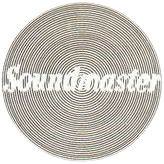 Soundmaster's logo. | |
| Headquarters | Madison, WI |
|---|---|
| Founder | James "Jim" Morgan |
| Founded | 1967 |
| Defunct | 1974 |
| Products | Outdoor warning sirens |
Soundmaster Signals was a short-lived siren company based out of Madison, WI. The company was known for producing single and dual rotor vertical sirens that were very similar to the Alerting Communicators of America (ACA) SuperBanshee in design and saw its premature end through tragic circumstances.
History
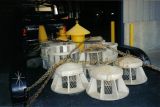
The company was formed by attorney James "Jim" Morgan in 1967, who was formerly the ACA dealer for Dane County, WI, and began to produce siren designs that were very similar to those created by Alerting Communicators of America. An unconfirmed rumour is that Morgan found discarded design prints for the SuperBanshee, leading him to create his own "clone" of the SuperBanshee. The company created 2 siren models, the Soundmaster 115 and its rotational variant, the Soundmaster 125, whose directional rotors and stators were nearly identical to the designs used by ACA. Soundmaster quickly became a threat to ACA, who sued the company (although it appears it was settled out of court) and damaged Soundmaster's reputation in the public eye by accusing them of plagiarizing their designs. ACA was unsuccessful in stopping Soundmaster from creating their products, however. Every siren was custom-built, with a variety of different configurations for the skirt placement, as the company's supervisors wanted to experiment with finding the optimal design for the best sound output. 2 and 3-signal sirens were offered, and all were driven by 20 hp Sterling[1] electric motors. Soundmaster unfortunately ran into several problems. The company was dealing with a negative reputation due to ACA's court case and accusations of plagiarism, and the sirens themselves were running into reliability issues.
The Sterling motors had a known design flaw that allowed ice into the motor, which froze the rotor shaft and eventually led to the destruction of the motor or the rotor. Soundmaster attempted to remedy this by installing heaters on some of their sirens, but this was too little, too late. The tolerances on the rotor/stator were often made too tight, leading to the rotor destroying itself by scraping against the stator, or if something got into the rotor. The fiberglass used was also prone to being damaged or blown away by high winds. The Soundmaster 125 in particular proved to be problematic, as the worm gear rotation drive that it used was very prone to failure, defeating the entire purpose of the siren while also suffering from the same issues as the Soundmaster 115. As a result of all of these issues, Soundmaster's sirens were mainly concentrated in Wisconsin and the surrounding states and saw little success elsewhere. Soundmaster's final nail in the coffin was Jim Morgan's unfortunate death in the early 1970s, after suffering a heart attack at a young age due to stress and weight issues. Morgan's death left the company without its founder and leader, and things quickly fell apart. The company tried to continue operation with its remaining employees, but Sterling discontinued the motors they were using due to the icing problems, leading to the company finally closing for good in 1974. Today, Soundmaster sirens are rare to find, as they've largely been replaced by newer sirens. The vast majority of surviving units are 115s, although a handful of Soundmaster 125s also survive.
Products
Soundmaster 115
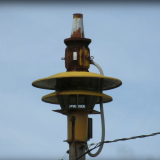
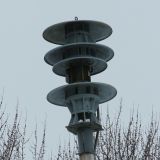
The Soundmaster 115 is a dual rotor (or optionally single rotor) vertical siren, with a distinctive and unique design similar to sirens such as the Federal Signal Model 2T22/Model 3T22, SuperBanshee, and the Sentry Siren Model 10V2T. The siren runs on an unprotected Sterling dual sided 20 hp AC motor, between its 2 rotors. The siren is 8/12-port dual tone as standard, with the 12-port rotor on top of the motor, and the 8-port rotor below the motor. A single tone variant of the siren was also produced, utilizing the 12-port rotor and stator from the dual tone variant, now placed below the motor instead of on top. Instead of using a different single sided motor, the single tone Soundmaster 115 uses the same dual-sided Sterling motor that the dual rotor version uses, with the upper shaft covered to protect it from damage. The siren is driven by the lower shaft of the motor. No 8-port single tone models are known to exist. As the name suggests, the Soundmaster 115 is rated at 115 dB at 100 ft. The rotors and stators on the Soundmaster 115 are directional, meaning that when the siren is wired correctly, sound output is increased. However, if the siren is wired backwards, sound output will be reduced. The siren was produced in both 2 and 3-signal models, with the 3-signal model having extended intakes with solenoid-operated dampers allowing for a hi-lo or pulse signal.
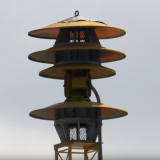
The siren has 3 skirts, with one skirt on the bottom rotor and 2 skirts on the top rotor to help project the sound, and the top intake has a large rainshield to keep debris out. The siren's intakes also function as the mount, giving it a distinct look. Mesh screens are included to help keep debris out of the intakes. Production of the Soundmaster 115 began in 1967, around the same time that ACA introduced its new sirens, including the SuperBanshee. It was noticed by ACA that this siren was incredibly similar to the SuperBanshee, with the rotors and stators being nearly identical. In fact, it was found by ACA that a dent visible on the SuperBanshee’s rotor was also present on the Soundmaster 115. This lead to ACA considering filing a lawsuit against Soundmaster Signals for infringing on their design. However, it appears to have been settled out of court. The siren ended production by 1974 after Jim Morgan's death. Today, a few Soundmaster 115 sirens remain in service, but the number is dwindling. As these sirens have aged, their motors have begun to fail (largely due to icing, a known defect on the motors used) and replacement parts are scarce. One unit in Taycheedah, WI still operates in Hi-Lo with its dampers, but the return springs have weakened to the point that once the siren winds up, they can no longer operate due to the air pressure, leading to the siren simply running alert. Today, more Soundmaster 115 units remain in service than its competitor, the SuperBanshee.
Soundmaster 125
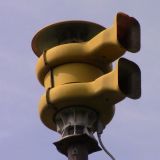
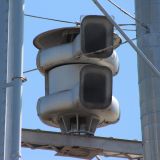
The Soundmaster 125 is essentially a Soundmaster 115 that has a large 2-piece fiberglass projector placed around it, with 2 stubby squared horns integrated into it. Each horn corresponds to one of the 2 rotors. Unlike most rotational sirens, the projector rotates around the siren while the siren itself remains stationary, rather than the entire siren rotating as a whole, similar to the Swedish Electric rotational sirens, and the RSH-10 Thunderbeam. The shape of the projector focuses and compresses the sound emitted from the rotors, outputting them through the 2 uniquely shaped rectangular horns. The top horn is slightly longer than the bottom horn. The rotator is driven by a separate motor, using a worm gear type of mechanism to rotate the projector around the siren, but this proved to be incredibly faulty due to the fibreglass gears wearing down quickly. When functional, the rotator would rotate at 3 rpm, although other rotation speeds were available through special order. The siren was intended to compete with ACA's SuperBanshee and Federal's 3T22, alongside the Soundmaster 115. The siren was produced only in 8/12 port dual tone, using a dual rotor setup similar to the ACA SuperBanshee.
Like the Soundmaster 115, the lower rotor and stator are 8-port, while the upper rotor and stator are 12-port. The Soundmaster 125 was available in either a 2-signal or 3-signal configuration, with 3-signal Soundmaster 125s including a damper on each extended intake which allow the siren to perform hi-lo or pulse signals, though no surviving units have been seen utilizing them. Like the Soundmaster 115, the Soundmaster 125 runs on a Sterling dual-sided 20 hp AC motor in between each rotor. The rotors and stators on the Soundmaster 125 are directional, which increases sound output when wired correctly, but harming the siren's performance significantly if it is wired backwards. The Soundmaster 125 was rated for 125 dB at 100 ft. Production of the Soundmaster 125 ended in 1974 after Jim Morgan's death and the discontinuation of the motors the sirens used. Today, a few Soundmaster 125s still stand, most of them inactive. All known active units have broken rotators, due to their poor design. Some municipalities have resorted to turning it into a bi-directional siren, facing the 2 horns in different directions to make the siren at least somewhat effective. The last Soundmaster 125 with a working rotator was removed in 2024 and is now in private possession.
Footnotes
- ↑ No relation to the siren manufacturer